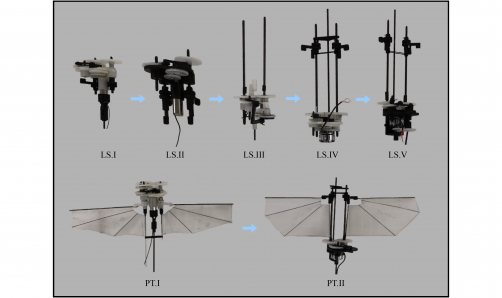UPDATE: Researchers have just unveiled a groundbreaking lift system for flapping wing micro air vehicles (FWMAVs) that significantly enhances their aerodynamic performance while reducing power consumption. This urgent advancement, developed by a team from Beihang University and Tsinghua University, promises to revolutionize the capabilities of these drones, making them more efficient and maneuverable than ever before.
Today, the study titled “Lift System Optimization for Hover-Capable Flapping Wing Micro Air Vehicle” was published, showcasing a novel design inspired by the flight mechanics of hummingbirds. By integrating elastic energy storage elements at the wing root, the researchers have successfully mimicked the complex musculoskeletal system of these agile birds, enabling energy storage and release during the flapping cycle.
The innovative system employs a crank-rocker mechanism combined with a gear system, optimizing the flapping angle to a remarkable 154°. This cutting-edge approach allows for improved lift capabilities, critical for applications ranging from surveillance to environmental monitoring.
Through extensive experimental testing, the team identified an optimized wing configuration, dubbed 80-455. This configuration features Icarex PC31 material, an 80 mm wingspan, a 45 mm chord length, and a 5° slack angle, all contributing to enhanced lift generation and efficiency. The researchers conducted finite element analysis (FEA) and lightweight design tests, successfully reducing the fuselage weight by 30.4%, bringing it down from 2.3 g to 1.6 g without compromising structural integrity.
The results are striking: the new lift system can generate a stable lift of 31.98 g with only a 10.5 g drone, achieving a maximum net lift of 17.6% of the vehicle’s weight. Notably, power consumption has been reduced by 4.5% under similar lift conditions, making this technology both effective and energy-efficient.
Flight tests confirmed the prototype’s capabilities, demonstrating its ability to hover continuously for approximately 1 minute at 50% throttle while executing rapid ascent maneuvers. These impressive results highlight the new design’s exceptional aerodynamic efficiency and reliability in flight.
The study, featuring contributions from Shengjie Xiao, Yongqi Shi, Zemin Wang, Zhe Ni, Yuhang Zheng, Huichao Deng, and Xilun Ding, is poised to impact various sectors by enhancing the performance of micro air vehicles. The full text can be accessed at https://doi.org/10.1007/s11465-024-0790-6.
As this technology progresses, the implications for drone applications are substantial. Enhanced maneuverability and efficiency could lead to breakthroughs in how these vehicles are deployed for real-time monitoring and other critical functions. Stay tuned for further developments in this exciting field!







